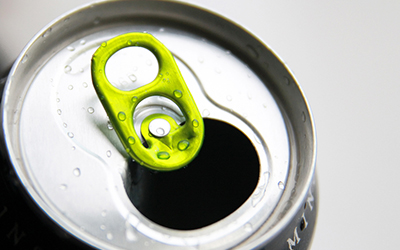



There’s lots of buzz about energy drinks, pun intended. These caffeine-spiked beverages are available everywhere, from grocery stores to the checkout counter at your local drugstore.
What makes energy drinks, well, energizing, is mostly caffeine. Caffeine is a central nervous system stimulant that will make you feel awake and alert. But the effect is temporary; your body and brain still need regular sleep in order to function properly.
Energy drinks are usually high in sugar and/or other carbohydrates, adding to the rush of energy you feel after drinking one and the sudden crash you’ll feel later. They may contain amino acids and various herbs and vitamins that the manufacturers claim have health benefits.
A December 2012 study by Consumer Reports, a nonprofit consumer advocacy organization in the U.S., compared the caffeine content in 27 top-selling energy drinks. Amounts ranged from 6–242 mg per serving, but many containers had 2+ servings in them. For example, one popular product that only contains about 2 oz. (60 ml) in each bottle says to “take ½ bottle to start.”
A typical 8 oz. (250 ml) cup o’ joe has about 100 mg of caffeine. Some popular brands that serve very dark roasts in larger portions can have closer to 330 mg per 16 oz. (500 ml).
For most healthy adults, about 250 mg of caffeine daily doesn’t pose a health risk. (If you are pregnant, have any health conditions, or take any medications, speak with your health care provider.) That’s equivalent to two to three small cups of coffee a day.
But energy drinks may pack more than that into one serving, and are marketed to seem harmless. Some students drink them throughout the day and feel dependent on them to be productive. This isn’t sustainable; it will disrupt natural sleep patterns, and may elevate heart rate. It is equivalent to consuming 10+ cups of coffee a day.
Information about the risks of mixing energy drinks and alcohol.
KENDRA LOVEGROVE is a third-year student at Kings University and is doing her combined honours in Journalism and Social Anthropology.
Among the energy drink products studied by Consumer Reports, 16 of the 27 listed how much caffeine they contain on their labels. But about 1/3 of those had at least 20 percent more caffeine than listed, based on lab results.
Look out for sneaky ingredients like guarana, a botanical source of caffeine-like compounds, which may not be listed as caffeine on the label.
Eleven of the 27 didn’t indicate caffeine amounts at all. There are currently no legal or business requirements that companies do so.


